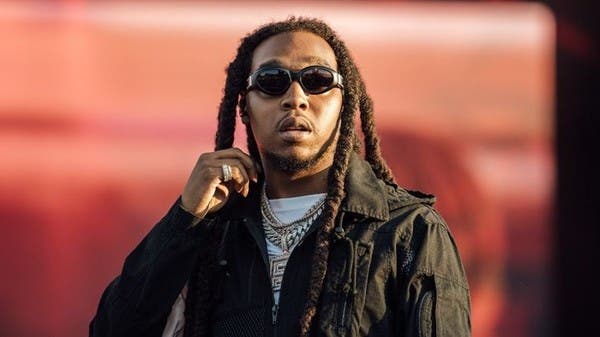
The killing of the 28-year-old American hip-hop star Takeoff during an off-books dice game outside a fancy bowling alley in downtown Houston was surreal even by American standards. As one-third of the era-defining rap trio Migos, the man born Kirshnik Khari Bell had attended the Met Gala, headlined an NBA All-Star game halftime show, and had his cartoon avatar appear in an Apple commercial. None of that immunized him from a stupid and senseless death. The precipitating argument, the shooting, and Takeoff’s bleeding corpse were all indecently and inevitably documented in an iPhone video that hit social media within hours.
For the latest headlines, follow our Google News channel online or via the app.
American music history is pock-marked with wasteful premature deaths, endings that are often poignantly ill-matched to the immensity of what was snuffed out. Jaco Pastorius, perhaps the greatest electric bass player of all time, picked a drunken fight with a bouncer at a nightclub in suburban Florida, who then proceeded to beat him to death; Hank Williams, the Hillbilly Shakespeare, finished drinking himself into oblivion in the back of a limousine in the middle of nowhere. Jimi Hendrix choked on his own vomit. These deaths were humiliating, pathetic even, but they are also far from meaningless. Pastorius, Williams, and Hendrix are some of our ultimate cases of talent extinguishing itself in a quest for something Americans often seem to value even more than talent: authenticity.
Takeoff, a hugely influential stylistic innovator and the most famous rapper to be murdered in years, died within an eerily perfect tableaux of the glitz and danger of some half-fantastic version of the American inner city, as if he was subsumed into a scene from his own music. Thirty years from now, when future generations are listening to “Stir Fry” or “Hannah Montana,” Takeoff’s tragedy will surely factor into the experience, much like “I Saw the Light” derives some of its awe-inspiring power from Hank Williams’s failure to save himself.
At first glance, authenticity would seem a paradoxical value for Americans to hold. It isn’t just that America is a land of reinvention, a continent-sized reset button for every conceivable type of human being. America is also a place where nothing can seem authentic. In Las Vegas, you can gamble inside three different simulacra of Italy; visitors to Disneyland begin in Main Street USA, a fake version of an imagined small-town American past. There’s barely anything in America that’s more than 400 years old. We made this whole country up as we went along.
Yet it is America’s artificiality that makes our culture so strangely fixated on the real. Who is a “real New Yorker?” Is Garth Brooks “real country?” Which rappers are lying in their lyrics, and which ones don’t write their own lyrics at all?
Direct ancestors of these questions have consumed Americans for centuries. One crucial premise of Moby Dick is that Ishmael isn’t a real whaler. Melville’s narrator is a rootless dilettante inhabiting a world populated by the real thing. Are we Americans more like Ishmael, wandering the streets of a port city, wondering at the world beyond dry land—or are we more like Captain Ahab, serious people connected to concrete places and ways of life (whaling-era Nantucket, in Ahab’s case) possessed of a sense of purpose that is pathological and unimpeachably pure? Do Americans even have a true self, or are we all liars?
The answer is that we’re both Ishmael and Ahab, and that the two poles can’t exist without the other. There is an authentic essence to American life, even if it’s often defined subculture-by-subculture: There really are real New Yorkers, real southerners, real gangsters, real country musicians, real McCoys, real gun nuts—and real Nantucket whalers, once upon a time. The most potent line of attack against Mehmet Oz, the celebrity Republican US Senate candidate, has been that he isn’t actually from Pennsylvania. In contrast, fakeness is often a byproduct of American mass culture, which gets its energy from bastardizing regional trends, styles, and even whole identities.
Once again, Takeoff is a case in point. As with Hank Williams, one of Takeoff’s key creative contributions was opening up the doors to something that had once been parochial. Migos are more responsible than just about anyone for popularizing the Atlanta “trap” style of hip-hop, which nearly all of American popular music has adopted in some way or another, country included. When they first broke in the mid-2010s, Migos’ music seemed wildly adventurous in its lyrical cadences, with the three rappers pulling off dizzyingly fast transitions between melody and vocal rapid-fire, emphasizing their verses with rhythmic exclamations and ad-libs. Migos selected beats that were spare and foggy; their songs were raunchy but had a humor that justified the larger product, and their constant lyrical references to the drug trade were always bouncy enough to reach commercial velocity. Atlantans were used to this style already, but the rest of the country wasn’t. The trap sound that Migos helped pioneer became cheapened as it got shoehorned into bigger and bigger pop contexts.
But trap would never have gone national, and then global, if Takeoff hadn’t been an authentic version of what he was, a product of lower-middle class Black north Atlanta. For better and worse, he was “real country” right up until the very end.
Read more:
Arab talents put super skills on show for Guinness World Records Day
Manal Ataya highlights museums as contemporary spaces for community building
Disclaimer: Views expressed by writers in this section are their own and do not reflect Al Arabiya English’s point-of-view.

